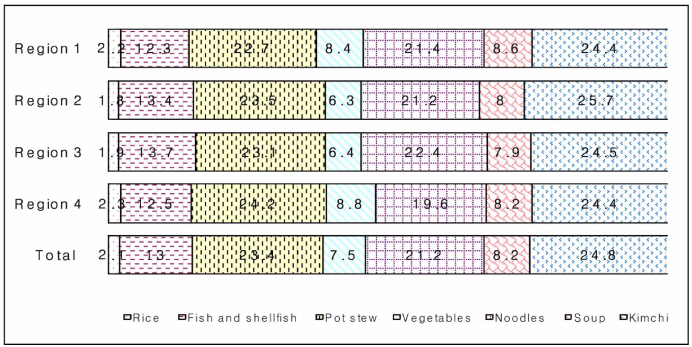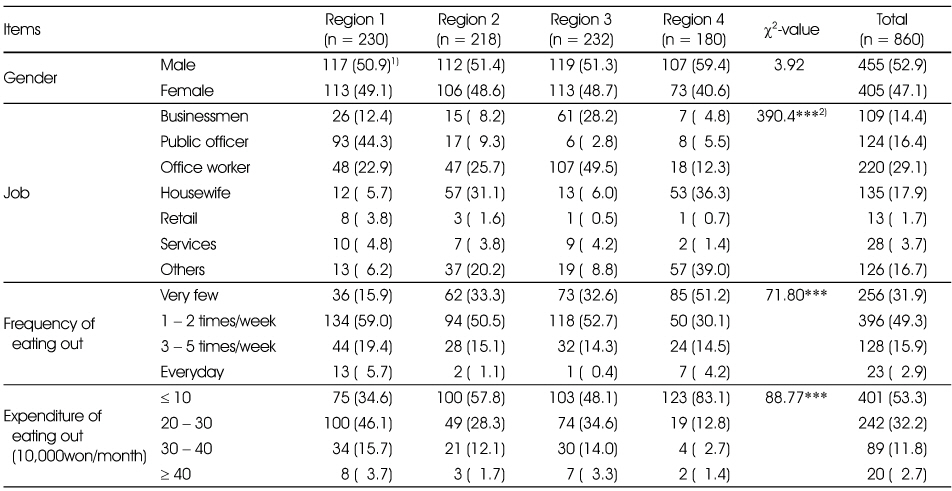References
1. Ahn EJ, Noh HY, Chung JY, Paik HY. The effect of zinc status on salty taste acuity, salty taste preference, sodium intake and blood pressure in Korean young adults. Korean J Nutr 2010. 43(2)132–140.
2. Bertino M, Beauchamp GK, Engelman K. Long-term reduction in dietary sodium alters the taste of salt. Am J Clin Nutr 1982. 36(6)1134–1144.
3. Blais CA, Pangborn RM, Borhani NO, Ferrell MF, Prineas RJ, Laing B. Effect of dietary sodium restriction on taste responses to sodium chloride: a longitudinal study. Am J Clin Nutr 1986. 44(2)232–243.
4. Blaustein MP, Hamlyn JM. Role of natriuretic factor in essential hypertension: An hypothess. Ann Int Med 1983. 98(5)785–792.
5. Chang SO. Effect of a 6-month low sodium diet on the salt taste perception and pleasantness, blood pressure and the urinary sodium excretion in female college students. Korean J Nutr 2010. 43(5)433–442.
6. Cho MK. Development of education materials for lowing sodium intake and analysis of educational effects for elementary students 2007. Changwon University; MS Thesis.
7. Chobanian AV, Hill M. National heart, lung, and blood institute workshop on sodium and blood pressure. A critical review of current scientific evidence. Hypertension 2000. 35858–863.
8. Chung EJ, Shim Eg. Salt-related dietary behaviors and sodium intakes of university students in Gyeonggi-do. J Korean Soc Food Sci Nutr 2008. 37(5)578–588.
9. Contreras RJ, Ftank M. Sodium deprivation alters neural responses to gustatory stimuli. J Gen Physiol 1979. 73(5)569–594.
10. Department of Health. Choosing health: making health choices easier 2004. UK:
11. Fregly MJ. Estimates of sodium and potassium intake. Ann Intern Med 1983. 98(5 Pt 2)792–799.
12. Jung YY, Shin EK, Lee HJ, Lee NH, Chun BY, Ann MY, Lee YK. Development and evaluation of nutrition education program on sodium reduction in elementary school students. Korean J Community Nutr 2009. 14(6)746–755.
13. Kim HH, Shin EK, Ann MY, Lee YK. Evaluation of the effectiveness of a salt reduction program for employees. Korean J Nutr 2009a. 42(4)350–357.
14. Kim HH, Shin EK, Lee HJ, Lee NH, Chun BY, Ann MY, Lee YK. Analysis by delphi survey of a performance evaluation index for a salt reduction project. Korean J Nutr 2009b. 42(5)486–495.
15. Kim JH, Choi MK. Salt intake behavior and blood pressure: the effect of taste sensitivity and preference. J Korean Living Sci Assoc 2007. 16(4)837–848.
16. Kim KS, Paik HY. A comparative study on optimum gustation of salt and sodium intake in young and middle aged Korean women. Korean J Nutr 1992. 25(1)32–41.
17. Kim MK, Hur YK, Choi JK. Interrater and intrater reliability of 'sip-and swallow' method for measurement of whole-mouth taste threshold. Korean J Oral Med 2004. 29(2)143–151.
18. Kim SH, Jang SY, Choi JK. Taste preference and whole mouth taste threshold in a Korean population in the age of the 3rd decade. Korean J Oral Med 2003. 28(4)413–426.
19. Kim YS, Paik HY. Measurement of the intake in Korean adult females. Korean J Nutr 1987. 20(5)341–349.
20. Kusaba T, Mori Y, Masami O, Hiroko N, Adachi T, Sugishita C, Sonomura K, Kimura T, Kishimoto N, Nakagawa H, Okigaki M, Hatta T, Matsubara H. Sodium restriction improves the gustatory threshold for salty taste in patients with chronic kidney disease gustatory threshold impairment in kidney disease. Kidney Int 2009. 76(6)638–643.
21. Lee HS. Studies on salt intake through eat - out foods in Andong area. Korean J Soc Food Sci 1997. 13(3)314–318.
22. Lee SK. A study on dietary sodium intake of office workers 2011. Kyungwon University; MS Thesis.
23. Lee YK, Son SM, Lee JJ, Lee HJ, Shin EK, Park MJ. A study on a scheme to reduce sodium intake, report of management center for health promotion. Report of Korean Health Promotion Center 2007.
24. MOHW/KIHASA. Korea National Health and Nutrition Examination Survey (KNHANES IV-2) 2008.
25. MOHW/KIHASA. Korea National Health and Nutrition Examination Survey (KNHANES IV-3) 2009.
26. Moon HK, Choi SO, Kim JE. Dishes contributing to sodium intake of elderly living in rural areas. Korean J Community Nutr 2009. 14(1)123–136.
27. Nam HW, Lee KY. A study on the sodium and potassium intakes and their metabolism of the pregnant women in Korea. Korean J Nutr 1985. 18(3)194–200.
28. Nicklas T, Weaver C, Britten P, Stitzel K. The 2005 dietary guidelines advisory committee: developing a key message. J Am Diet Assoc 2005. 105(9)1418–1424.
29. Nordin S, Razani LJ, Markison S, Murphy C. Age-associated increases in intensity discrimination for taste. Exp Aging Res 2003. 29(3)371–381.
30. Pamnani M, Huot S, Bugg J, Clough D, Haddy F. Demonstration of a humoral inhibitor of the Na-K pump in some models of experimental hypertension. Hypertension 1981. 3(6 Pt 2)II-96–II-101.
31. Park HR, Jeong GO, Lee SL, Kim JY, Kang SA, Park KY, Ryou HJ. Workers intake too much salt from dishes of eating out and food service cafeterias; direct chemical analysis of sodium content. Nutr Res Pract 2009. 3(4)328–333.
32. Park SK, Seo KI, Shon MY, Moon JS, Lee YH. Quality characteristics of home made Doenjang, a traditional Korean soybean paste. Korean J Soc Food Sci 2000b. 16(2)121–127.
33. Park YS, Son SM, Lim WJ, Kim SB, Jeong YS. Comparison of dietary behaviors related to sodium intake by gender and age. Korean J Community Nutr 2008a. 13(1)1–12.
34. Shin EK, Lee HJ, Ahn MY, Lee YK. Study on the development and evaluation of validity of salty taste assessment tool. Korean J Nutr 2008a. 41(2)184–191.
35. Shin EK, Lee HJ, Jun SY, Park EJ, Jung YY. Development and evaluation of nutrition education program for sodium reduction in foodservice operations. Korean J Community Nutr 2008b. 13(2)216–227.
36. Shin EK, Lee HJ, Lee JJ, Ann MY, Son SM, Lee YK. Estimation of sodium intake of adult female by 24-hour urine analysis, dietary records and dish frequency questionnaire (DFQ 55). Korean J Nutr 2010. 43(1)79–85.
37. Son SM, Huh GY. Salt intake and nutritional problems in Korean. Korean J Community Nutr 2002. 7(3)381–390.
38. Son SM, Huh GY, Lee HS. Development and evaluation of validity of dish frequency questionnaire (DFQ) and short DFQ using Na index for estimation of habitual sodium intake. Korean J Community Nutr 2005. 10(5)677–692.
39. Son SM, Park YS, Lim WJ, Kim SB. Preliminary study for low salt intake project of Korean people 2006. Ministry of Health and Welfare;
40. Son SM, Park YS, Lim WJ, Kim SB, Jeong YS. Development and evaluation of validity of short dish frequency questionnaire (DFQ) for estimation of habitual sodium intake for Korean adults. Korean J Community Nutr 2007a. 12(6)838–853.
41. Son SM, Park YS, Lim WJ, Kim SB, Jeong YS. Sodium intakes of Korean adults with 24-hour urine analysis and dish frequency questionnaire and comparison of sodium intakes according to the regional area and dish group. Korean J Community Nutr 2007b. 12(5)545–558.
42. Willett WC, Sampson L, Stampfer MJ, Rosner B, Bain C, Witschi J, Hennekens CH, Speizer FE. Reproducibility and validity of a semiquantitative food frequency questionnaire. Am J Epidemiol 1985. 122(1)51–65.
43. Willett WC. In : Willett WC, ed. Food Frequency Methods. Nutritional eqidemiology 1990. New York: Oxford University Press; 69–91.
44. Yamauchi Y, Endo S, Sakai F, Yoshimura I. A new whole-mouth gustatory test procedure. I. Thresholds and principal components analysis in healthy men and women. Acta Otolaryngol supple 2002. 122(4)39–48.
45. Yim JE, Cho MR, Yin CS, Seo BK, Koh HG, Choue RW. Nutrients and salt consumption of hypertension patients according to treatment status. Korean J Nutr 2005. 38(9)706–716.








